
 |
|
||||||||||||||||||||||||||||||||||
Book, Music & Lyrics by Richard O'Brien Directed by Jim Sharman Understudies : Susan Morse, Alan Martin, John Mark Robinson
|
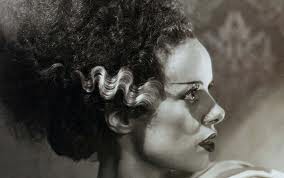
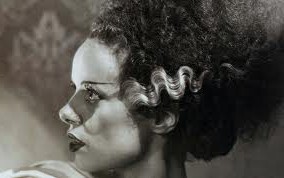
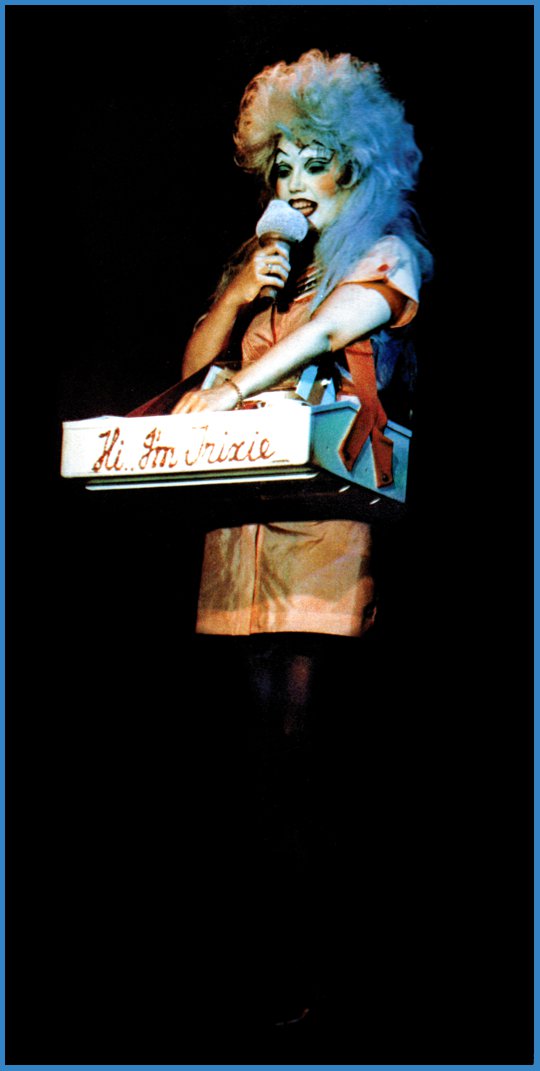
| TRIXIE (a caricature rather than a real person) |
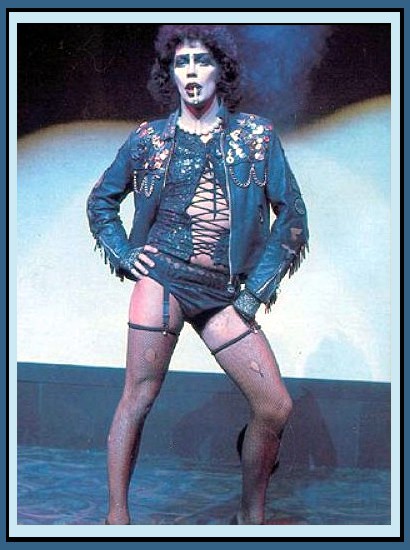


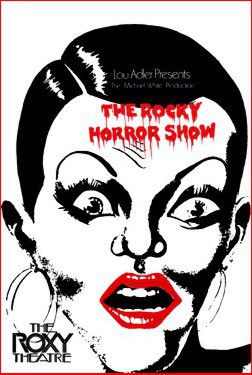
At The end of 1973, Lou Adler, U.S. music producer and owner of "Ode Records", attended a London performance of The Rocky Horror Show accompanied by Britt Ekland (the mother of his son). He determined immediately that this was what he'd been looking for, to showcase his new "nightclub theatre" The Roxy, he secured the rights within days. After two previews, The Rocky Horror Show premiered in the USA at The Roxy Theatre, Los Angeles, opening at the 500-seat nightclub venue on March 21, 1974 ( 3 weeks before the Australian production ). Australian director Jim Sharman was directing the Australian production when he left to direct the Roxy Cast, and many other backstage members came over from the London show, although Tim Curry was the only member of the cast to reprise his role. Meat Loaf joined the cast as Eddie/Dr. Scott, Kim Milford as Rocky, Boni Enten as Columbia, Jamie Donnelly as Magenta/Usherette Trixie. (The Usherette was first called "Trixie" at the Roxy.) Bill Miller and Abigale Haness as Brad and Janet, and Susan Morse as backing and understudy. A recording of this cast is available, that shows the level of talent populating this version, although the actual arrangements are not those used for the show.
Tim Curry and Meat Loaf left the cast in September 1974 to begin recording the soundtrack sessions for the film, replaced respectively by Paul Jabara and Alan Martin. The Rocky Horror Show closed at the Roxy Theatre on January 5, 1975. Despite the obviously over-qualified cast, and enormous population difference between England, Australia and the USA, it ran for only 9 months.
Unlike the London and Sydney shows, this production wasn't playing in an abandoned cinema, but a nightclub with tables and bar service. Brian Thomson recreated the look of a cinema proscenium and the set retained some of the scaffolding and catwalk but the general look was flashier and didn't look dilapidated. The costumes were professionally made, rather than cobbled together, with Brad and Janet's costumes being changed completely, to look "Preppy" rather than "Nerdy". Adler insisted on Tim Curry looking more like a rock star, and so he dyed his hair black before leaving London and took on a Lou Reed appearance.
The performance nights at The Roxy, were to the benefit of the club not the show. With an unbeatable cast, if it had played in its original setting of a Movie Palace in decline, I believe it would have played for years instead of months.
Taking the show out of it's signature setting, only led to confusion, although the show did gain a cult following and was attended by the rich and famous, including John Lennon, and Elvis.
Many of the people involved with the London production of Rocky Horror have said in interviews that they believe the subsequent American productions in Los Angeles and New York and the film version lost much of what’s important about the show, its grit, its rawness, its confrontational directness, its relationship with its audience. The original Rocky confronted and challenged its audience, when it was made slick and expensive, when the sets got better, when the film score was orchestrated, some believe it lost its soul, its politics, its pre-punk sound, its edge.
The producers then took it to Broadway, set up with the audience cabaret style at small tables, the show was panned and was a dismal flop, running only forty-five performances. It received one Tony Award nomination for lighting design but lost.
Patricia Quinn, the original Magenta, says, “The show lost a lot of its naiveté. It lost its gritty appeal. These people improvised and made it glitzy.” Clive Barnes wrote in The New York Times, “It was unexpected, unpretentious, and the cinema itself [in the original London production], from the peeling walls to the grubby seats, provided it with the perfect ambiance. It now looks flashy, expensive, and over-produced. Why didn't someone understand – before the Los Angeles paint job – that the entire point of The Rocky Horror Show in London was that it was tacky?”
A far cry from the critical response in Australia where reviewers and public alike raved and the show ran for two decades.Paul Jabara replaced Tim Curry, and although popular in the role, it has been said that his interpretation was too camp. Paul Jabara had been playing Herod in Jesus Christ Superstar in London in 1972, with Richard O'Brien as his understudy, when he met Sharman and Thomson. Jabara had been in the original cast of Hair on Broadway. Interestingly, in a mirror early career, Reg Livermore was in the Australian cast of Hair, also played Herod in the Australian JCS, and was Frank here too.
It's a great pity that The Roxy cast were the least successful of the international casts, as they should have been the most popular. The USA's sexual immaturity, compared to the rest of the West, is part of the humour, and perhaps wasn't as obvious when shown there. One cast member has said "they just didn't get it" - referring to the American people, and also the American producers.
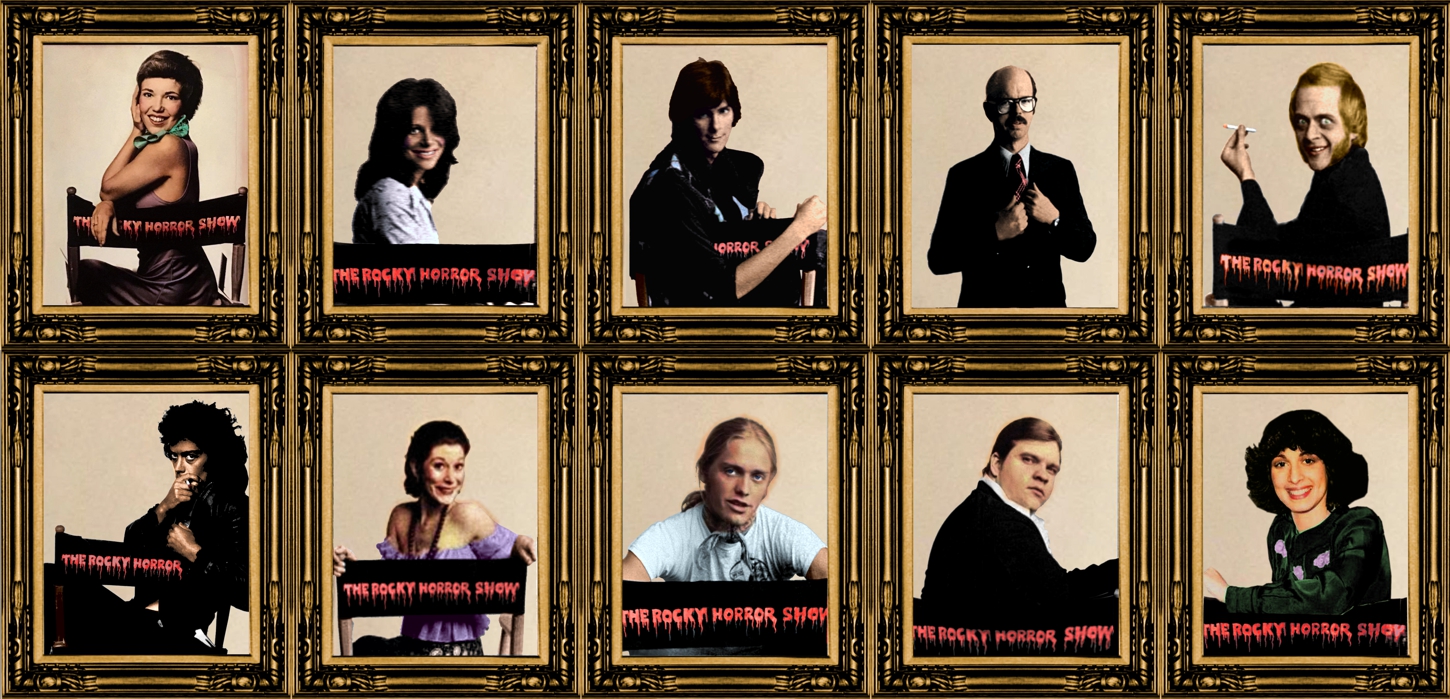
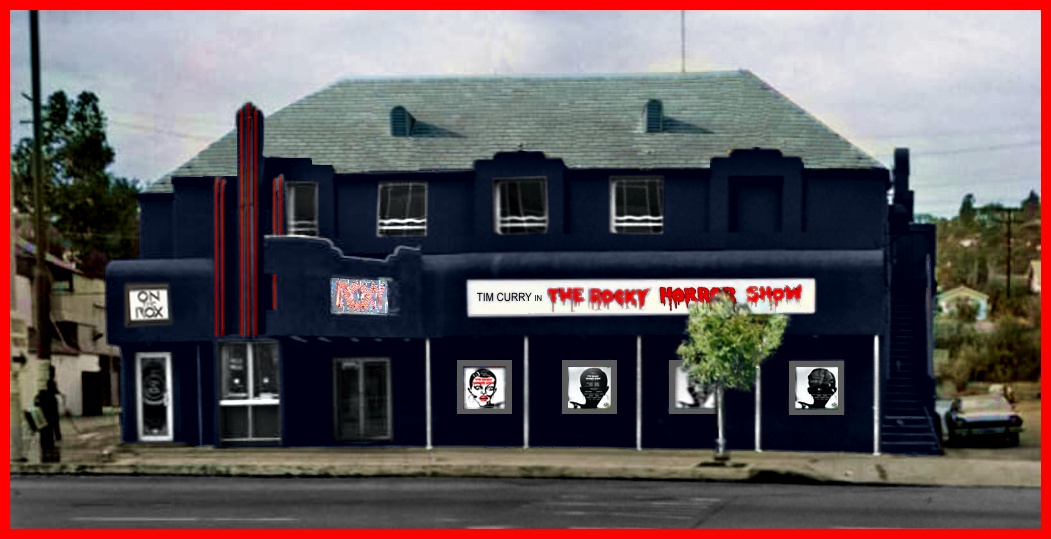
The interior of a rotting cinema was recreated within the confines of a nightclub setting
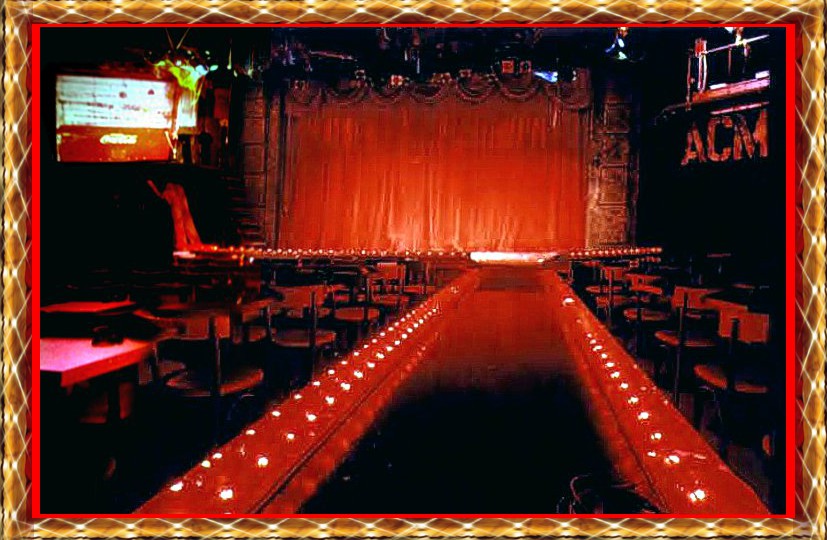
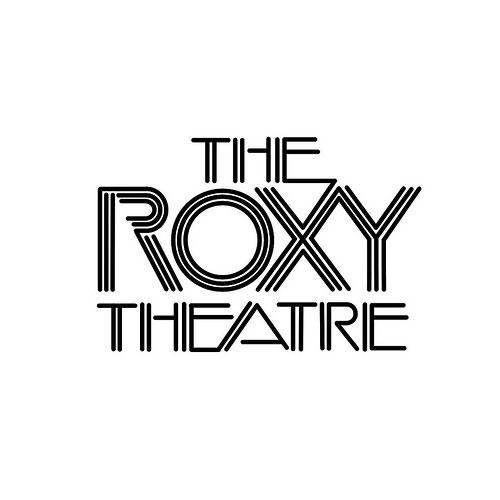

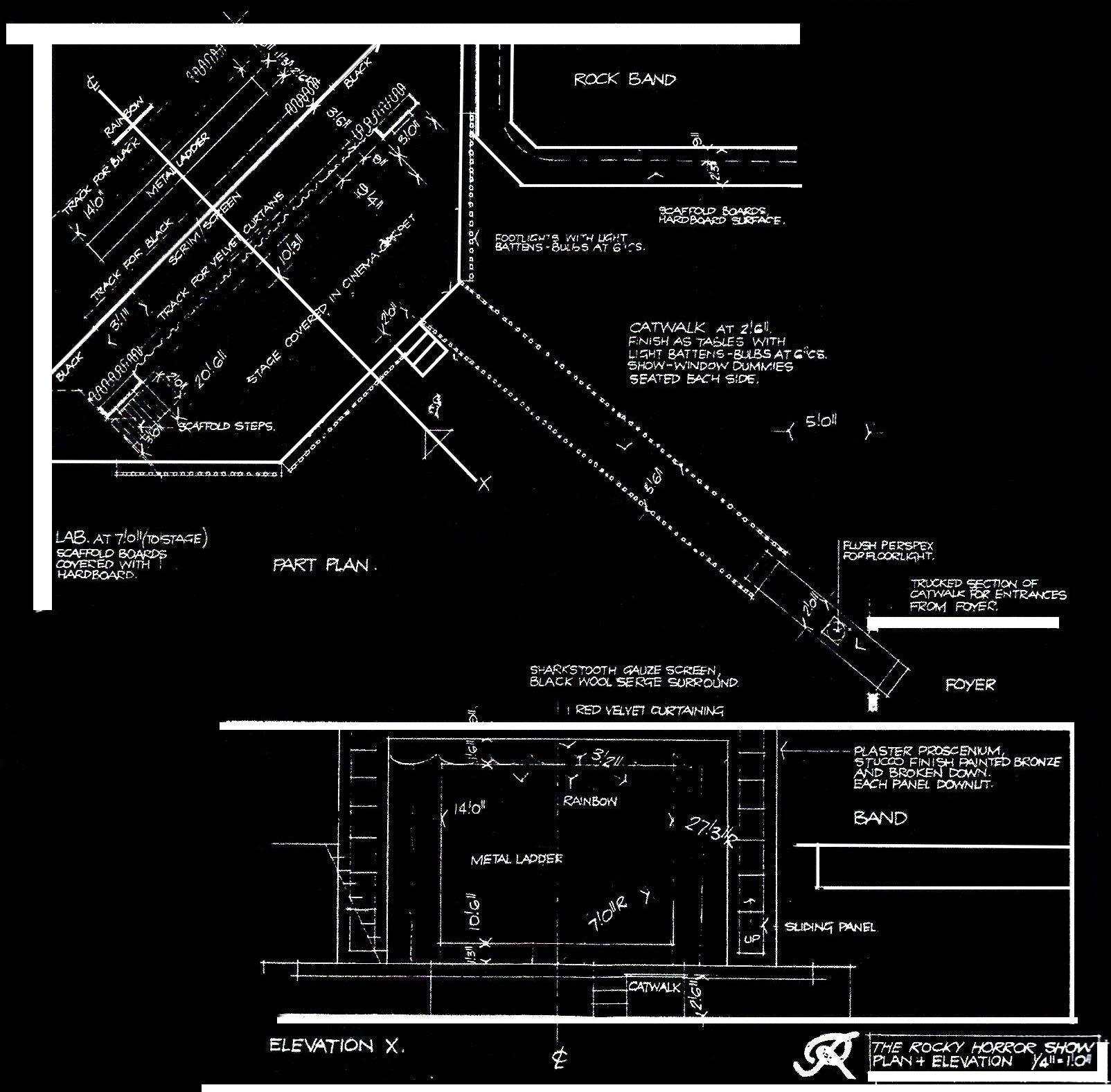
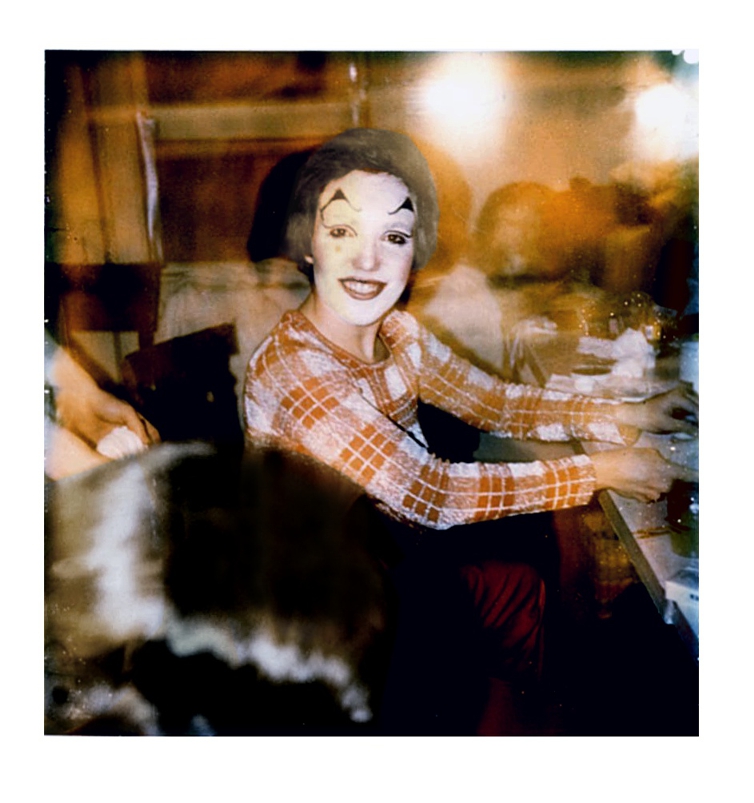
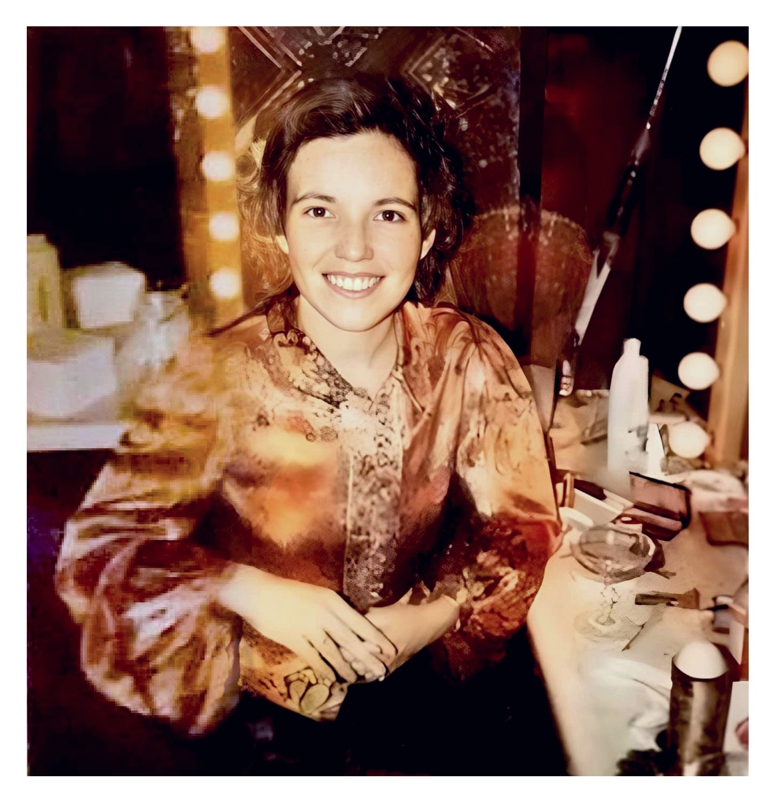
Jamie Donnelly Backstage photographed by Mark Jeremy Trybulski
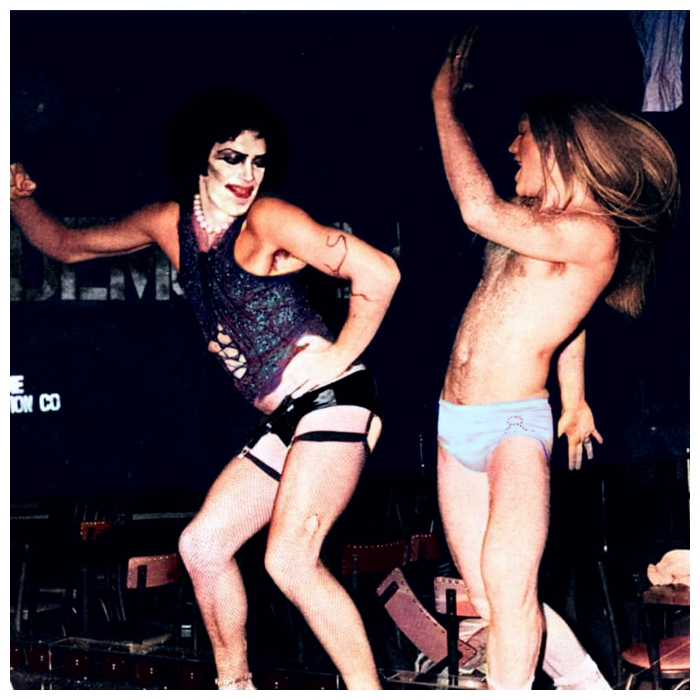
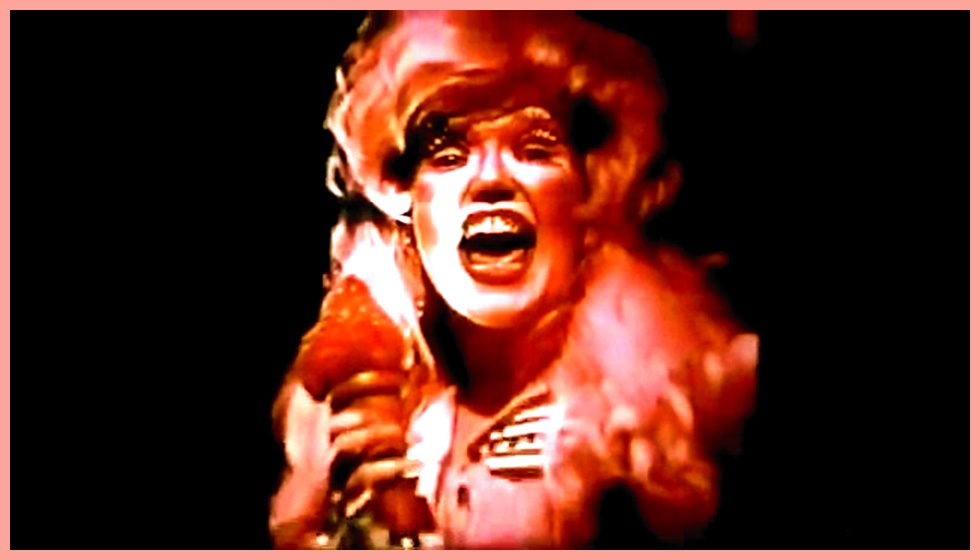
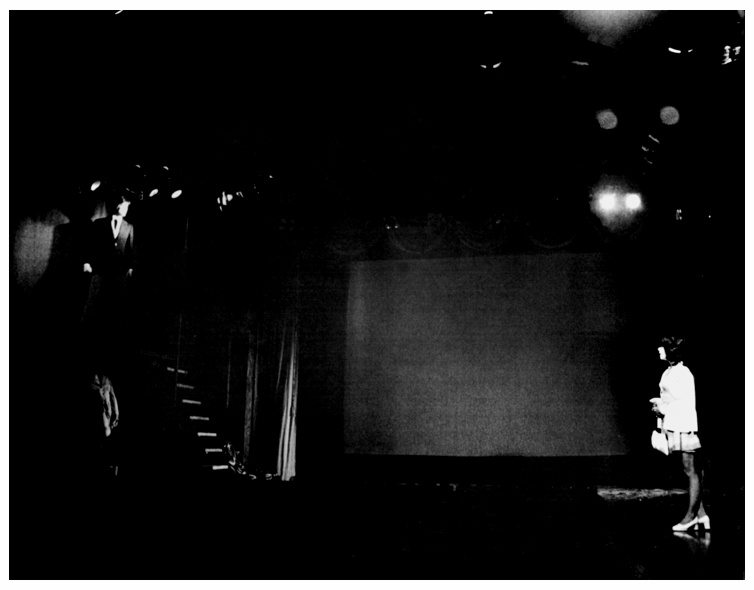
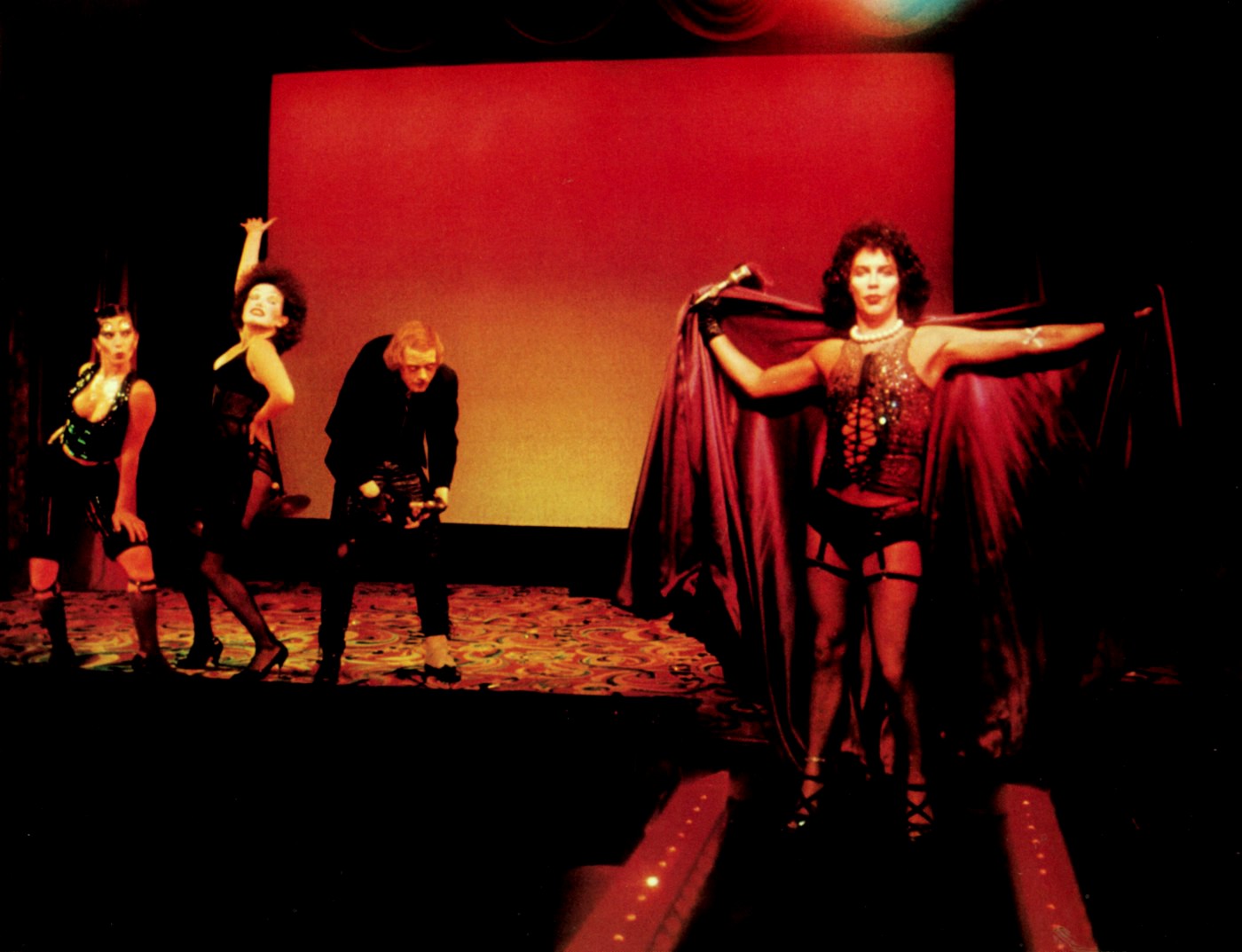
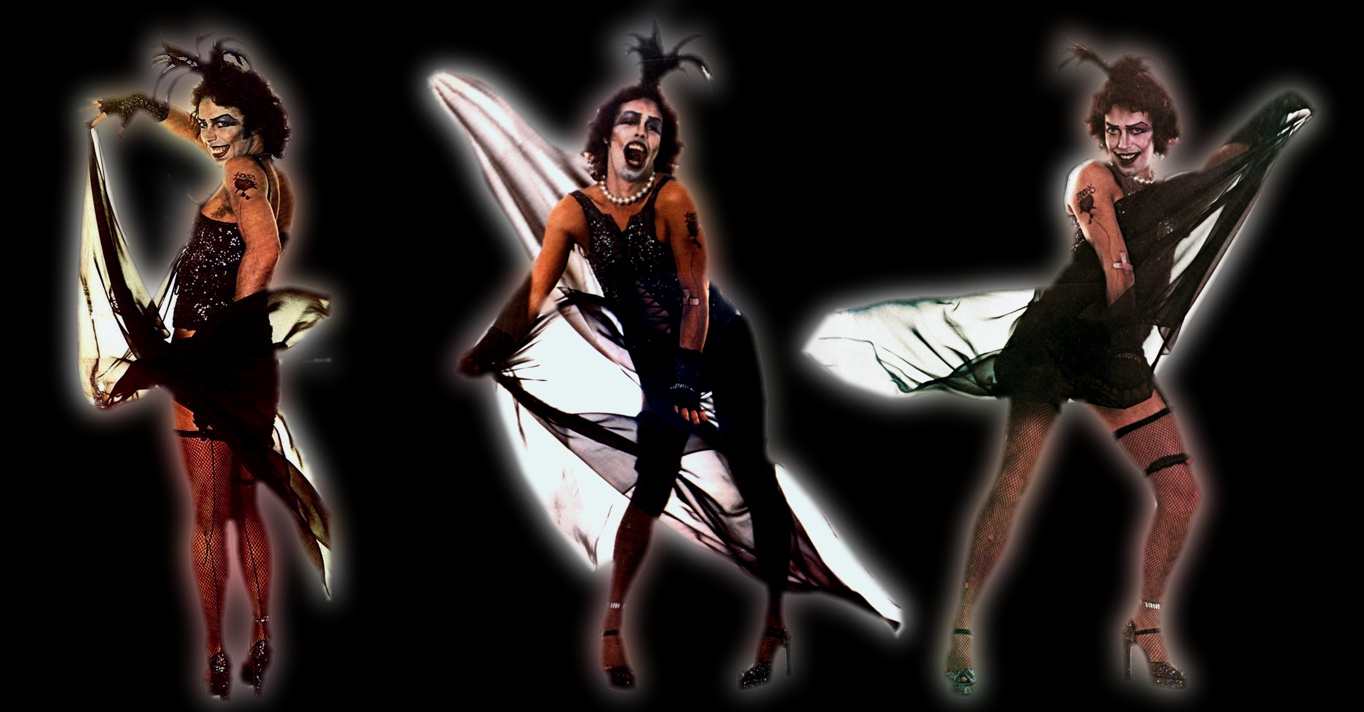
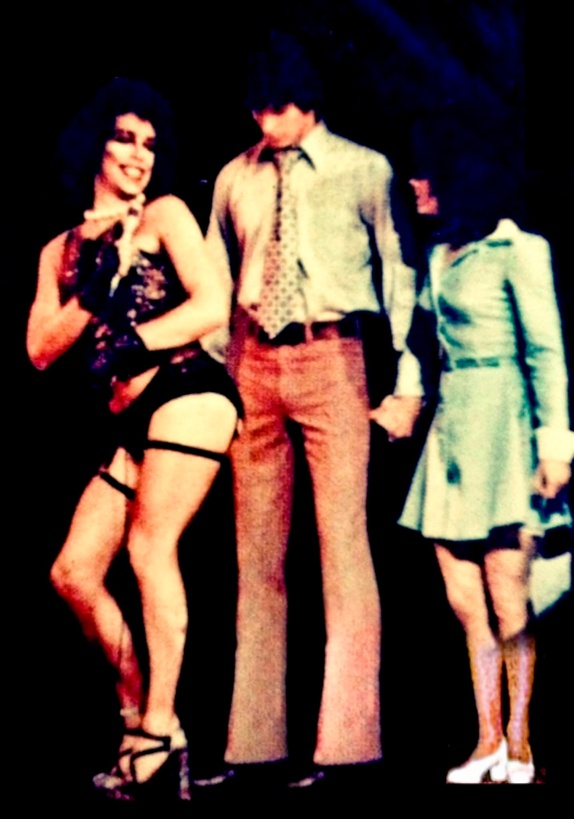
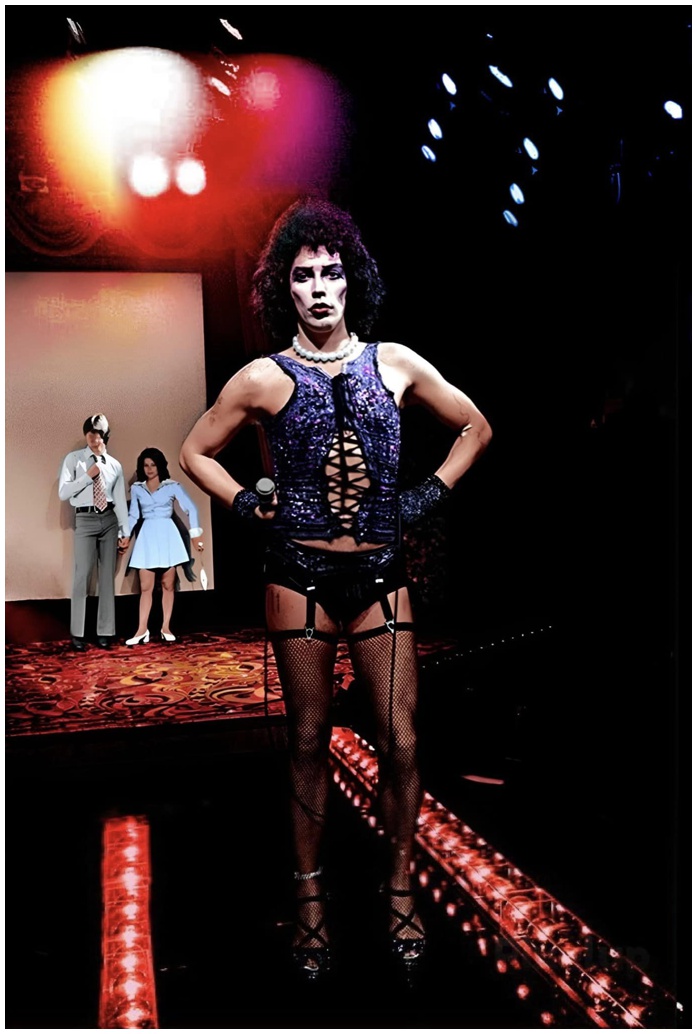
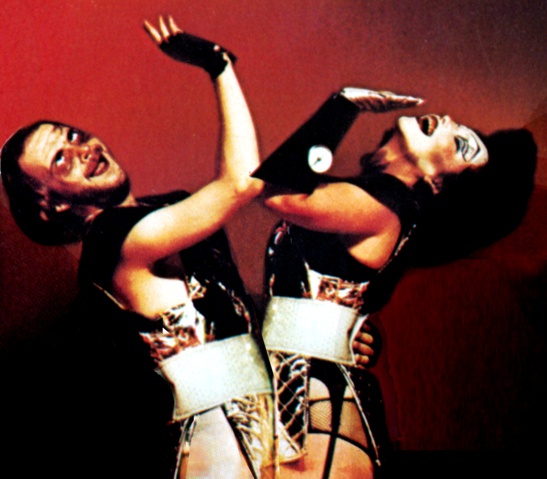
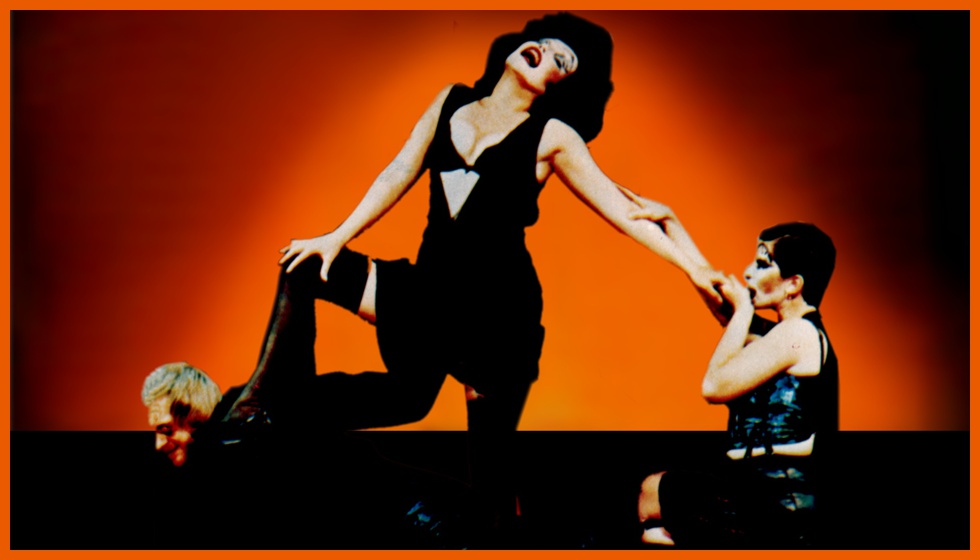
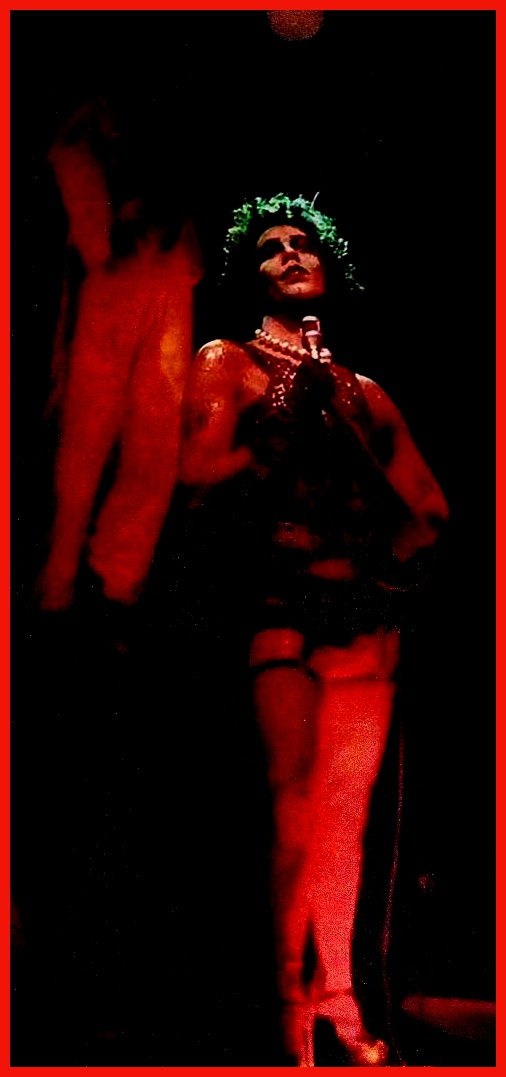
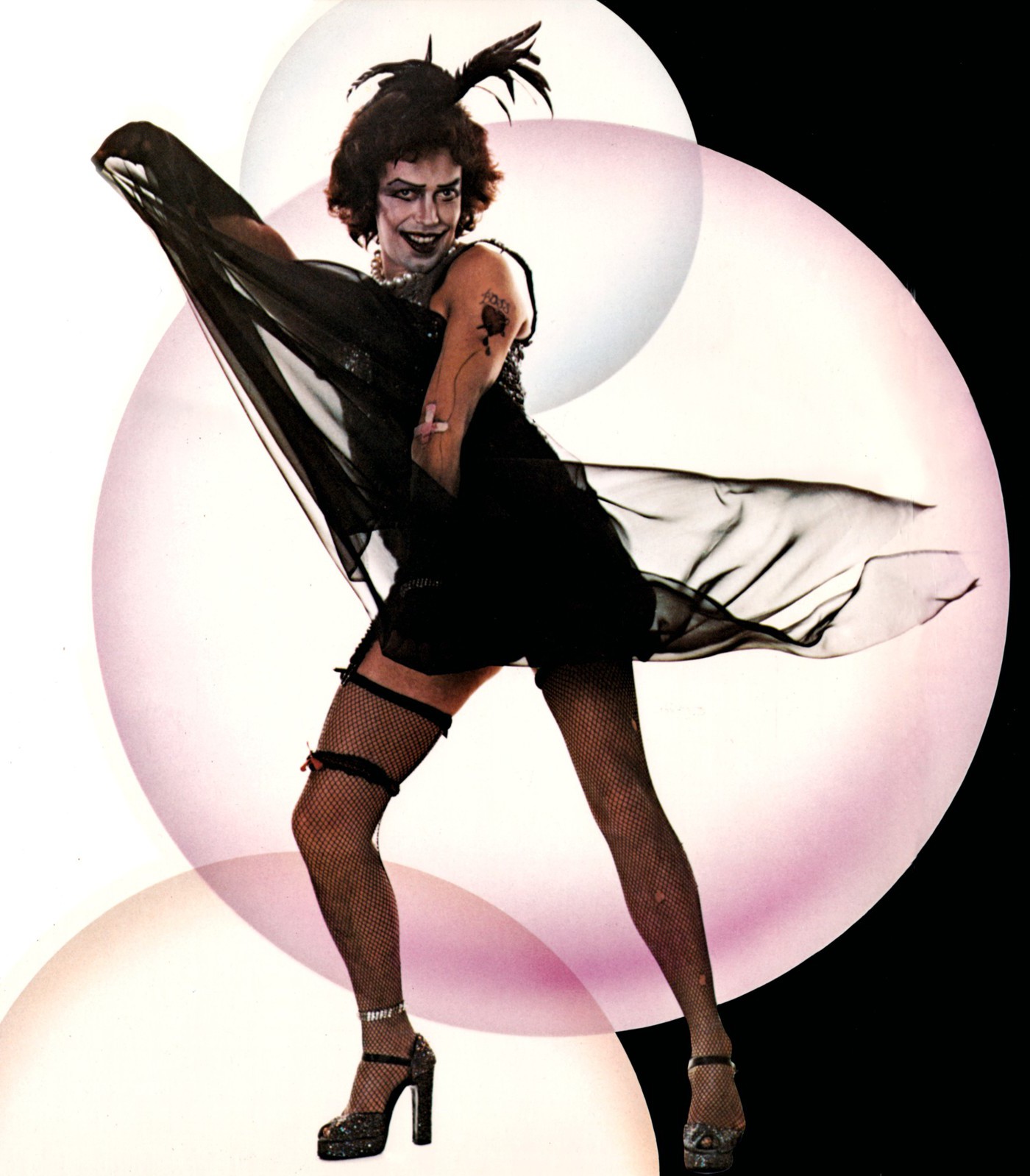
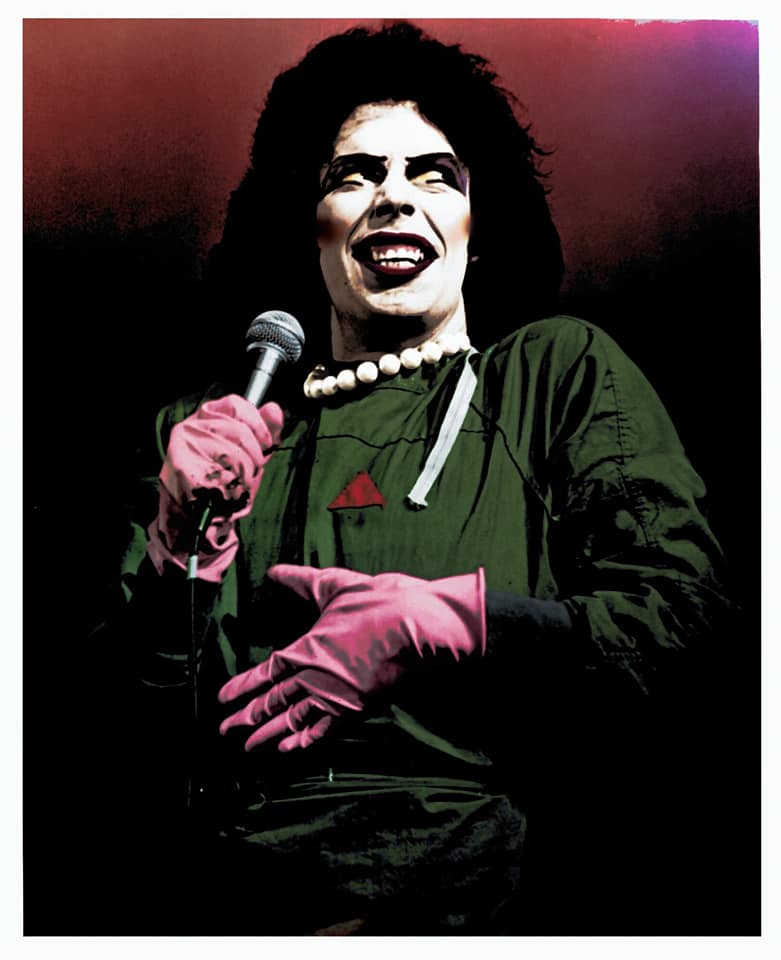
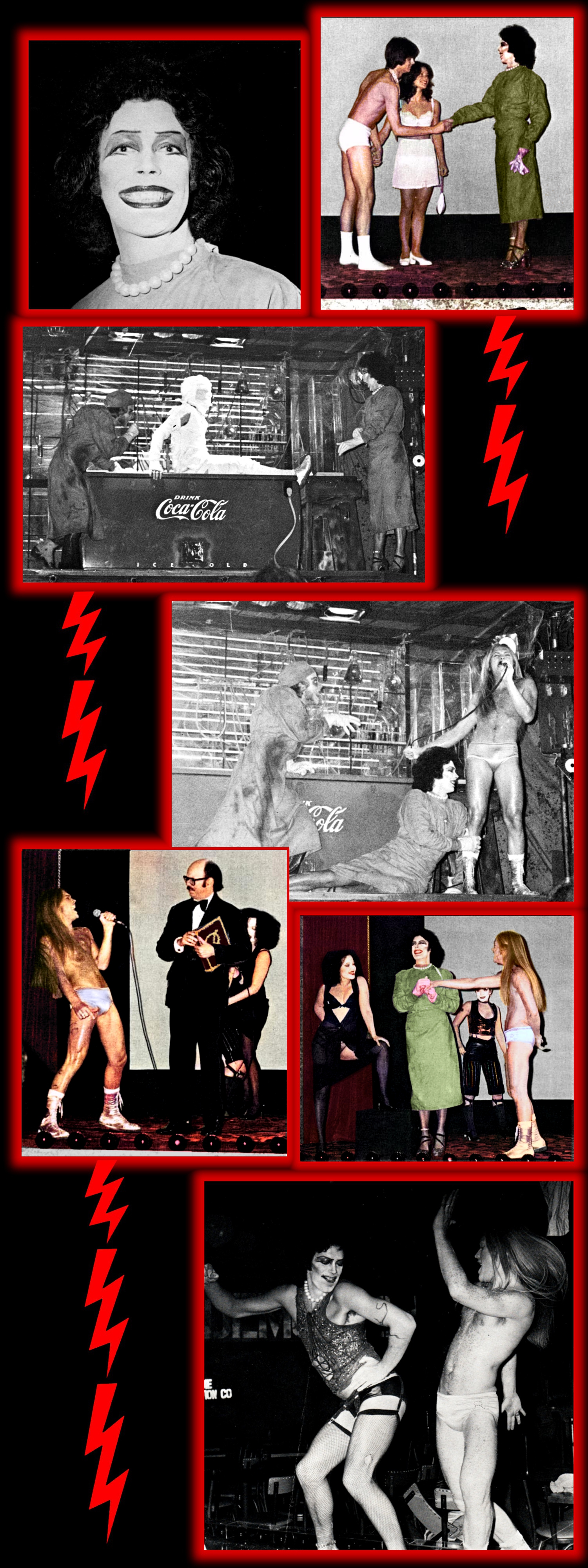
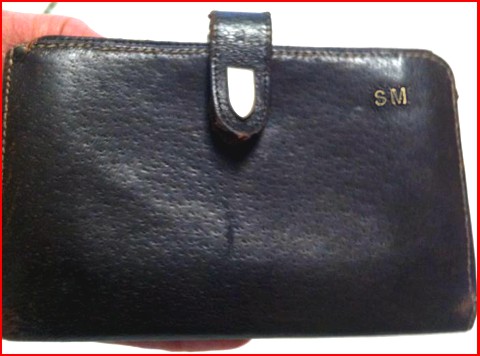
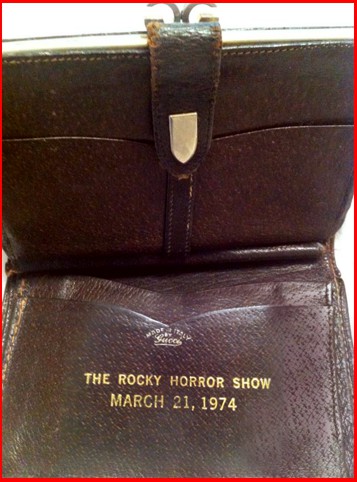
The GUCCI wallet given to Susan Morse by Lou Adler, Opening Night |
John Lennon attends
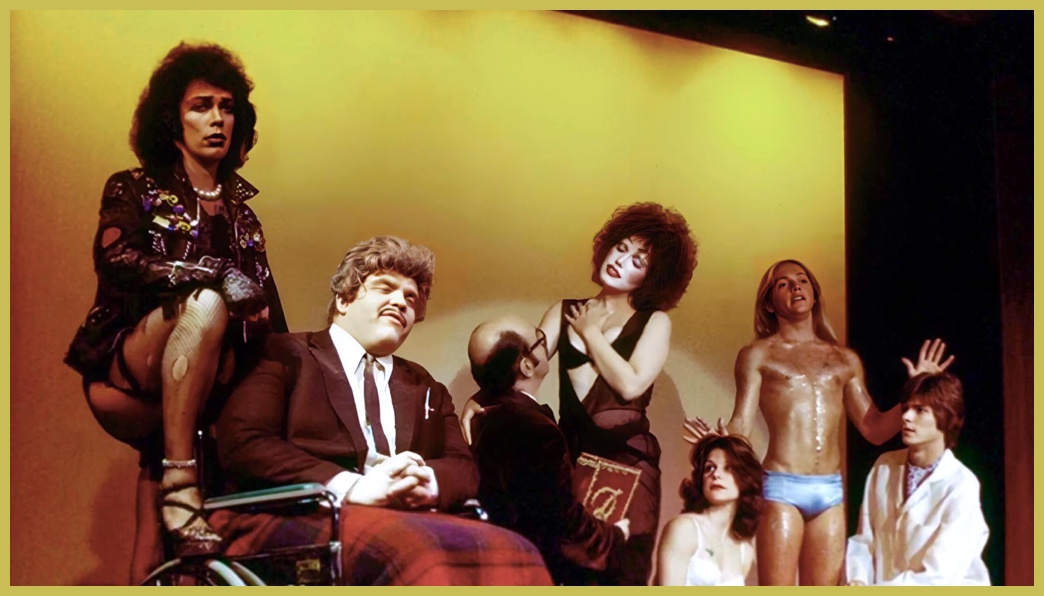
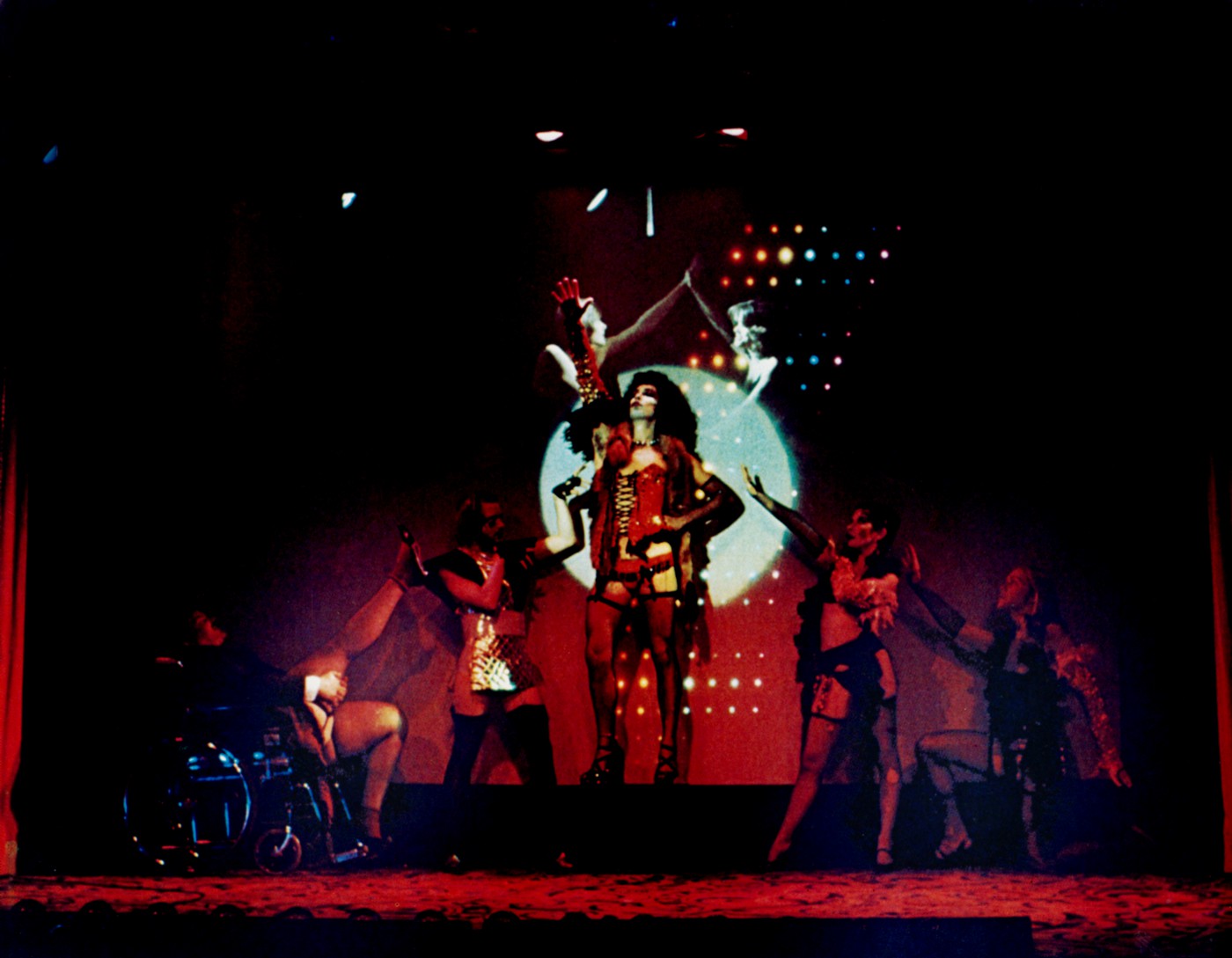
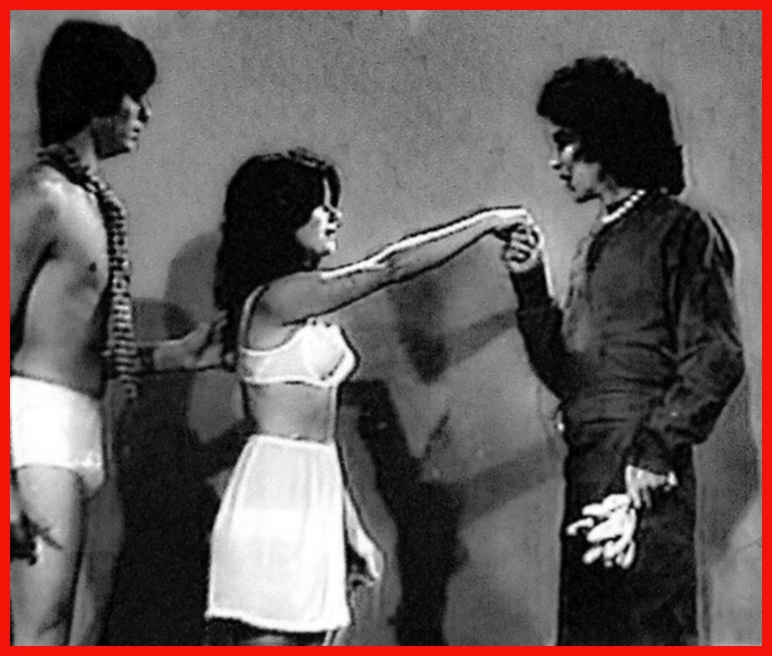
Review supplied by Tony Pazuzu
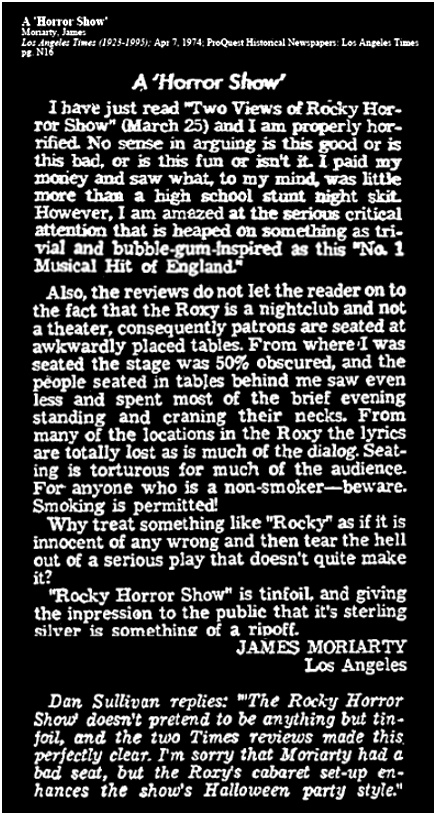
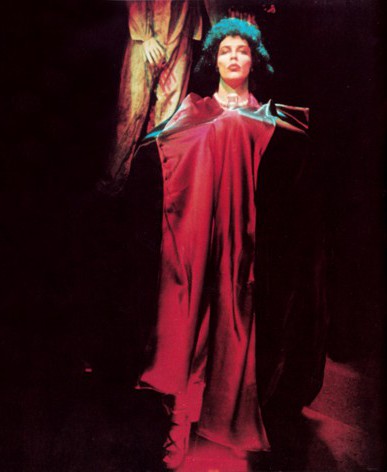 |
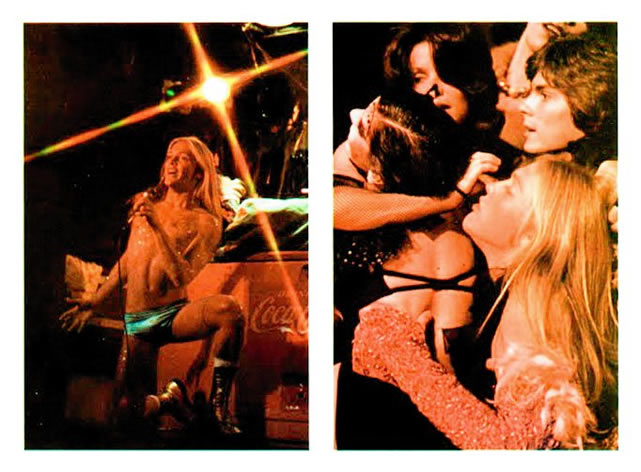 |
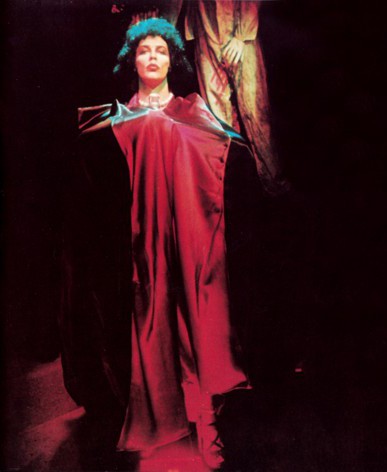 |
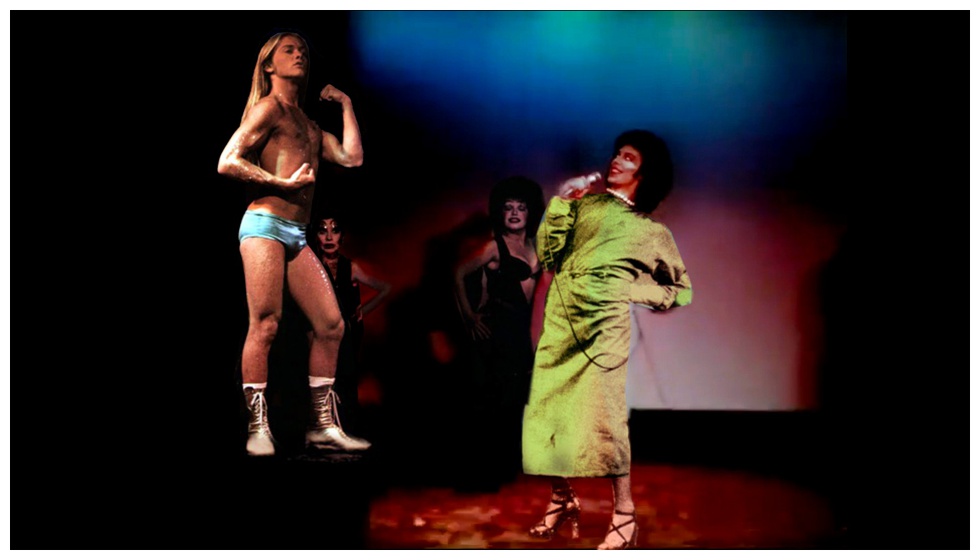
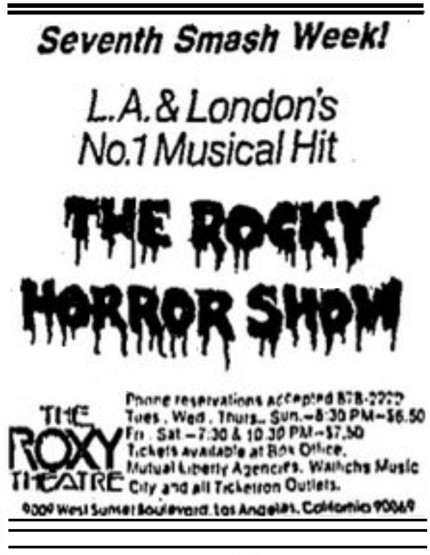
Newspaper advertisment
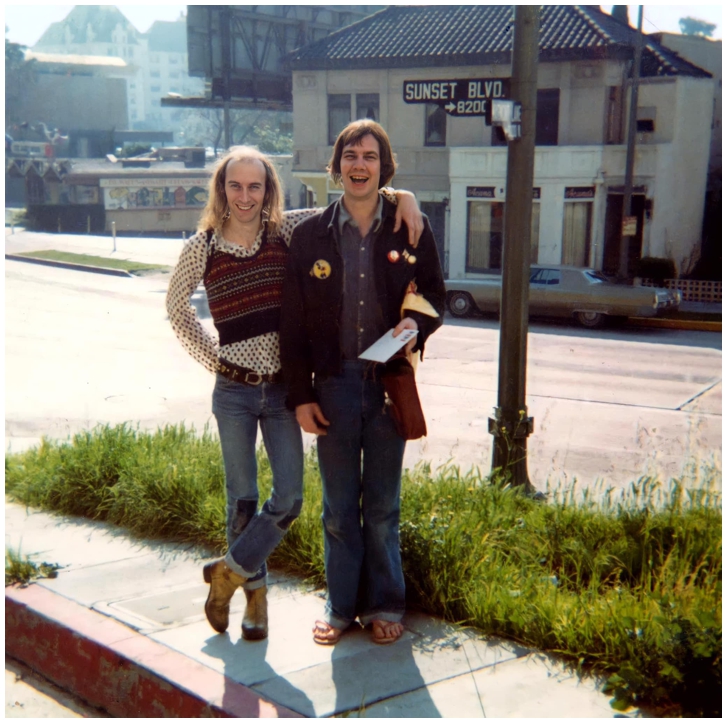
Richard O'Brien and Brian Thomson L.A. 1974
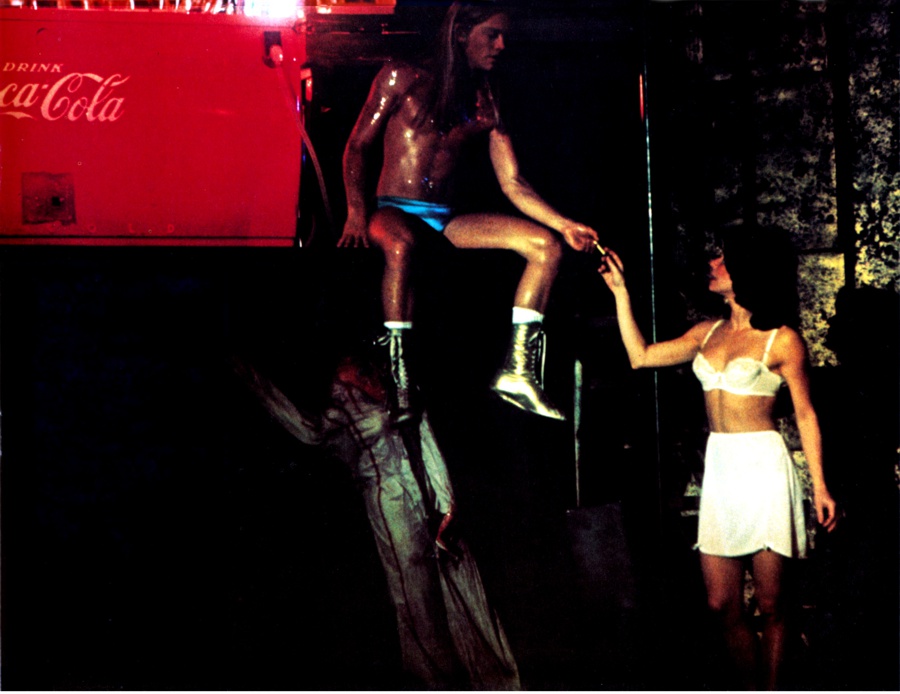
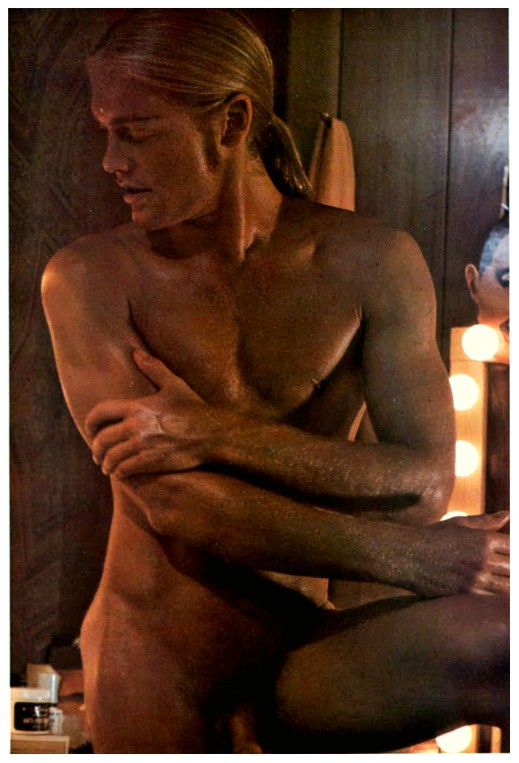
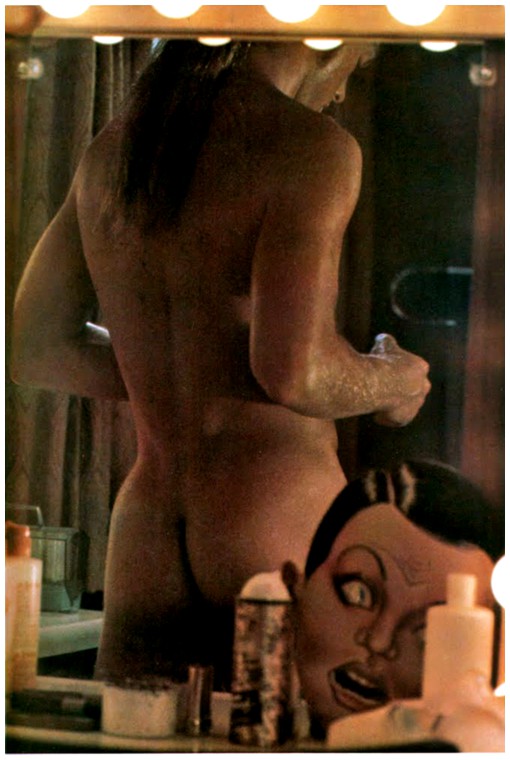
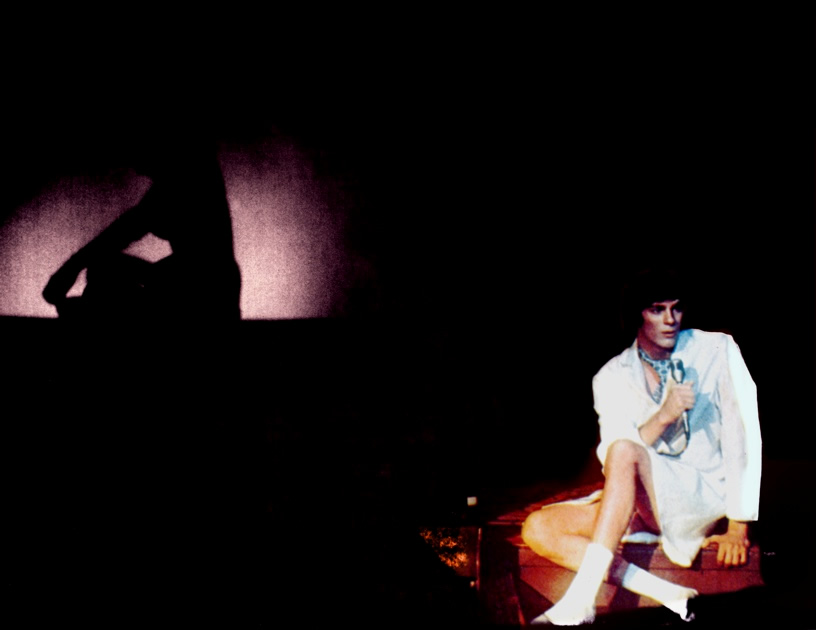
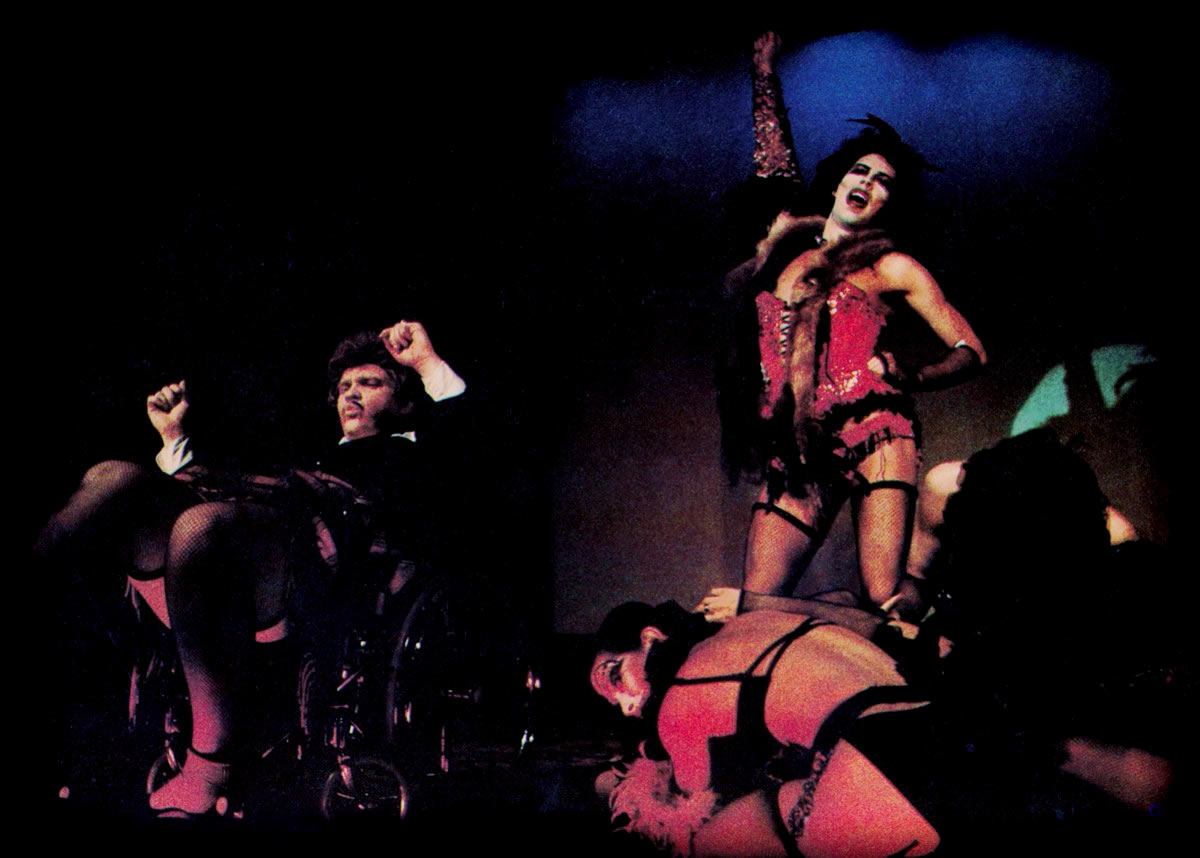
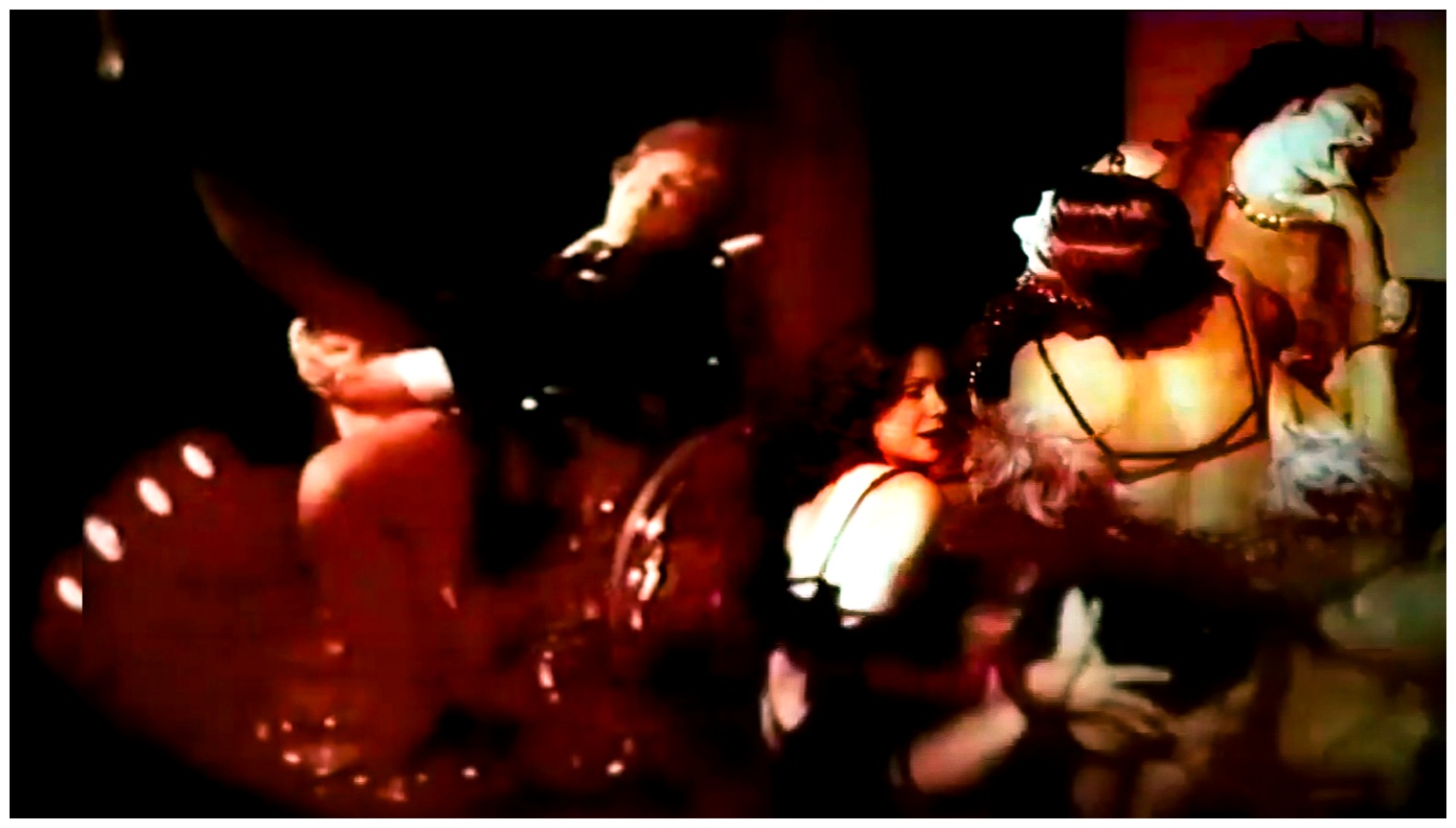 |
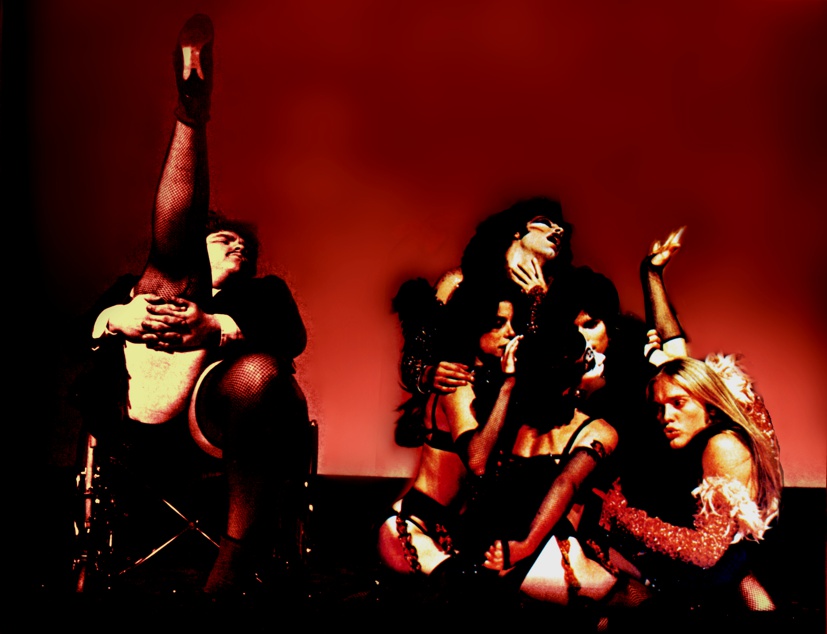
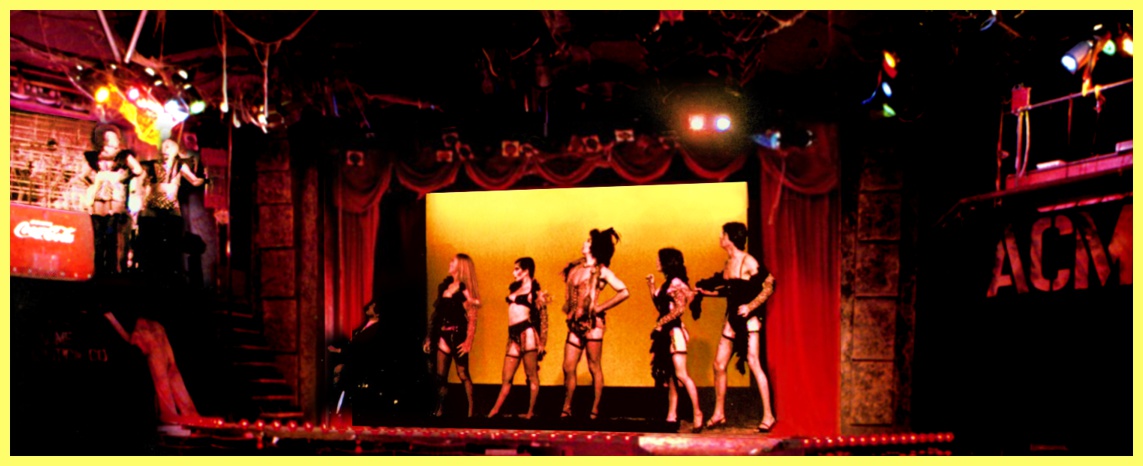

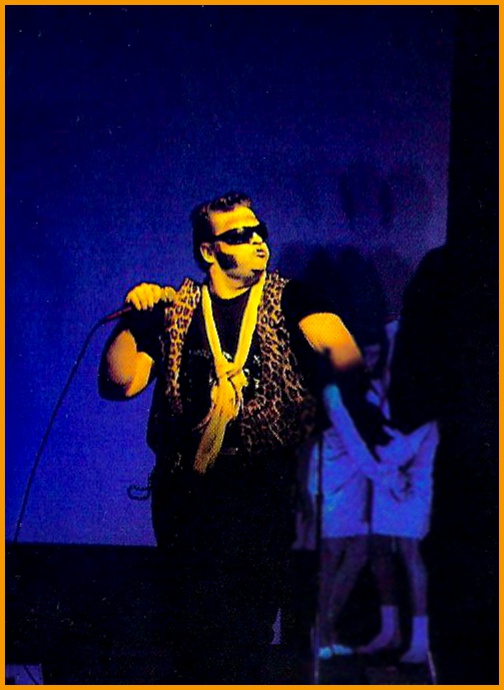 |
 |
| Roxy Cast Opening Night Mask with cast list |
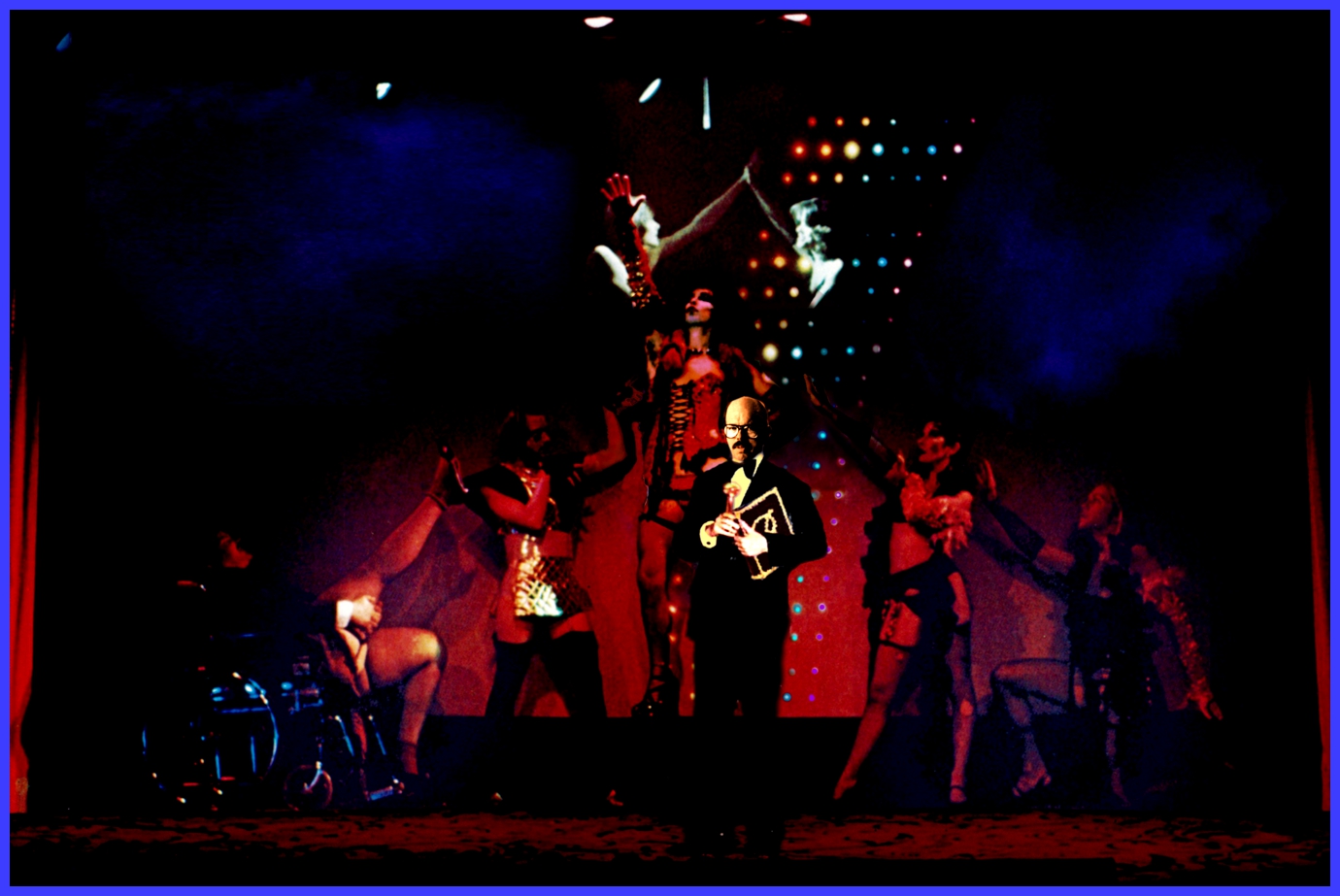
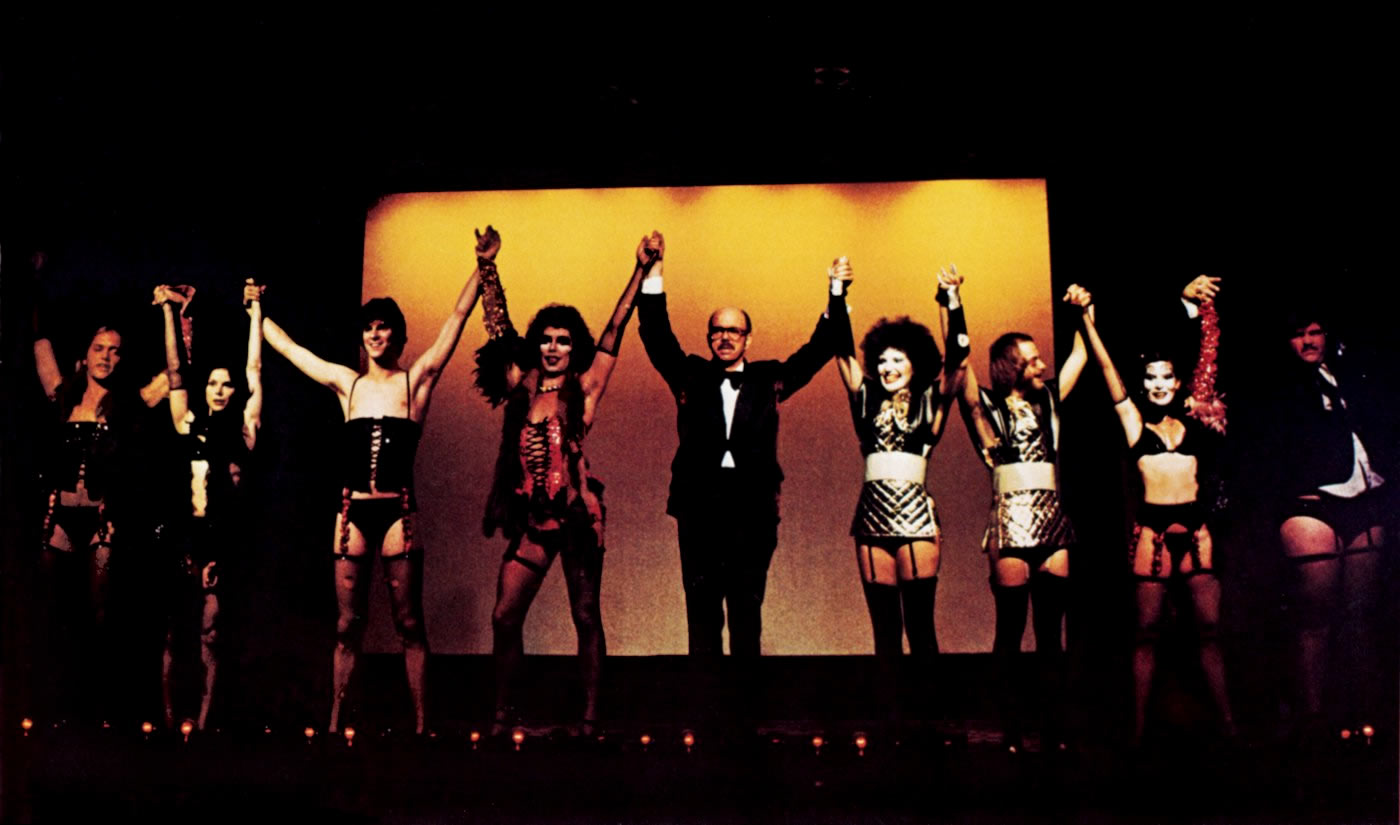
The cast celebrate the last night before Tim Curry and Meatloaf leave to make the movie |
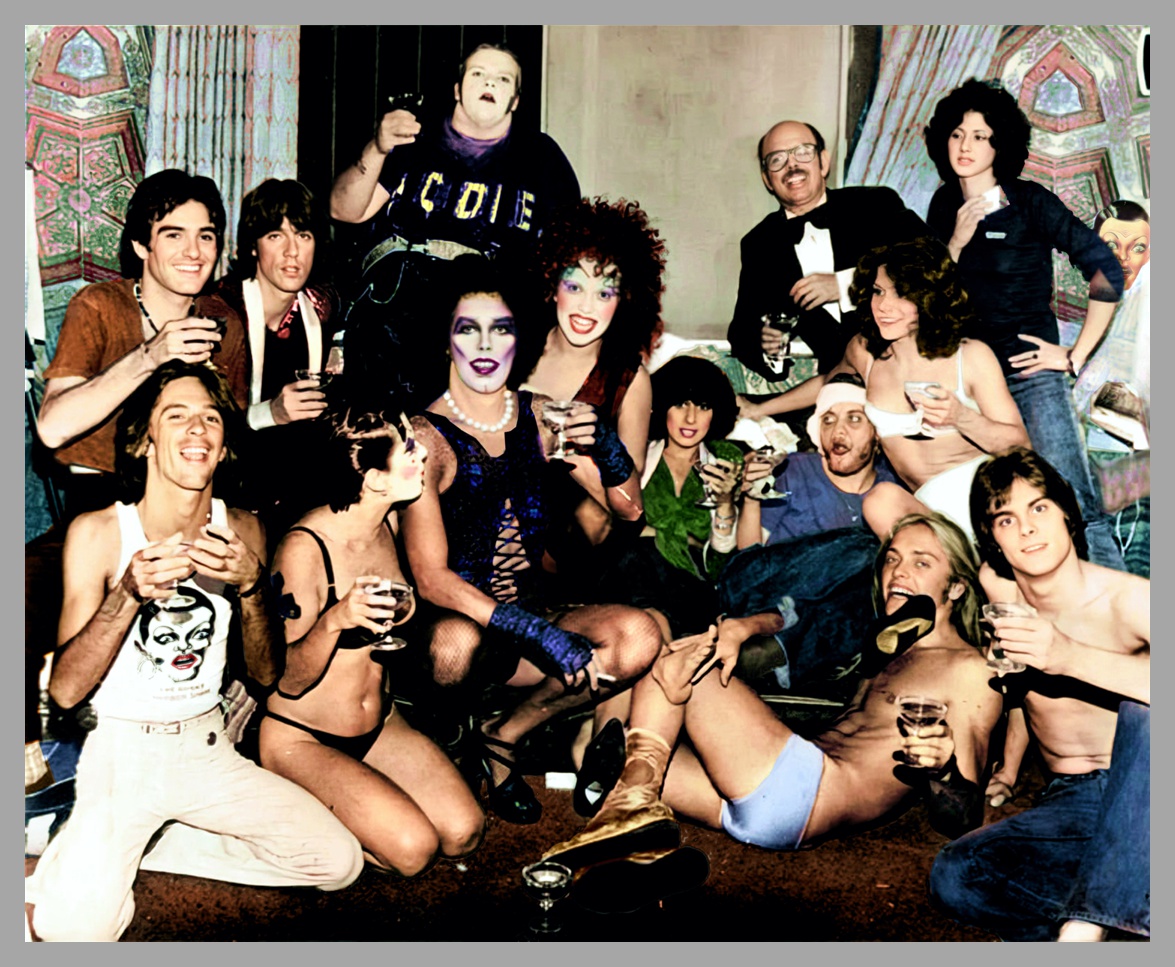
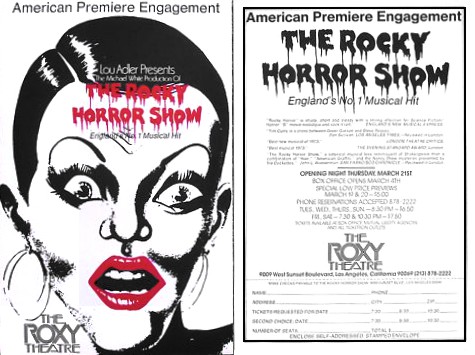
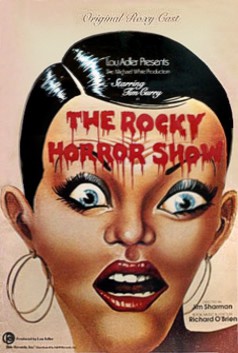
Handbill and Poster
Bruce Scott and Susan Morse record The Time Warp for the cast recording.
Recording the Roxy Cast LP
This is not strictly a cast recording. Lou Adler, used his own studio, and employed musicians who didn't take part in the actual show, who perform arrangements that never played at The Roxy. The live show's band played renditions much closer to the originals with no trumpets. The songs were sped up for the LP, and Sword Of Damocles is sung in a different style than was actually used. Lou Adler wanted an LP that anyone would buy, as a stand alone recording. Those who think it represents a capture of The Roxy show are mistaken.
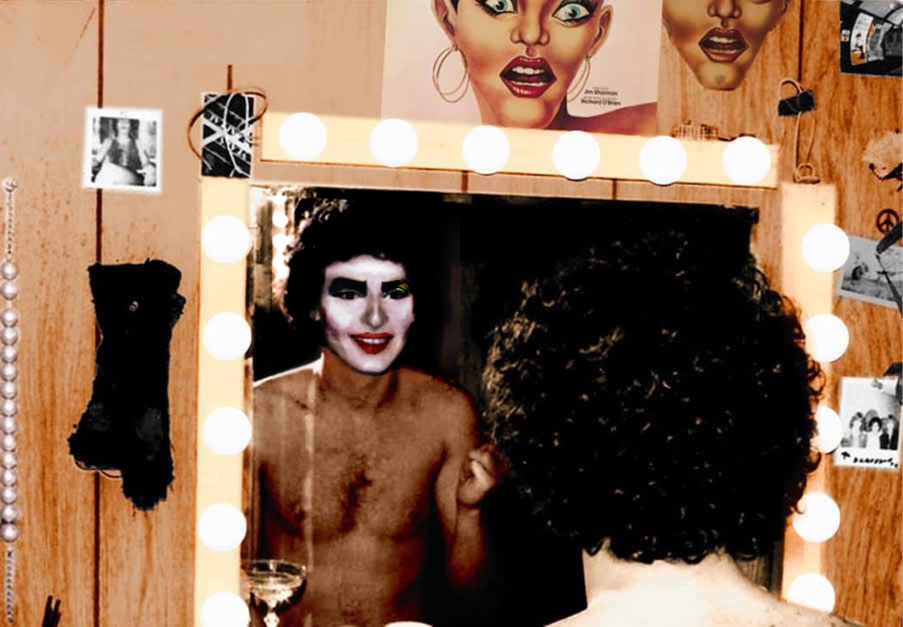 |
|---|
Dressing Room photograph of Paul Jabara by Bev Bremers
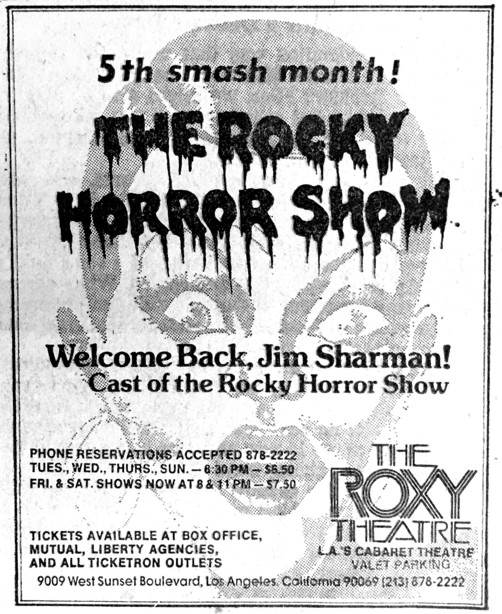
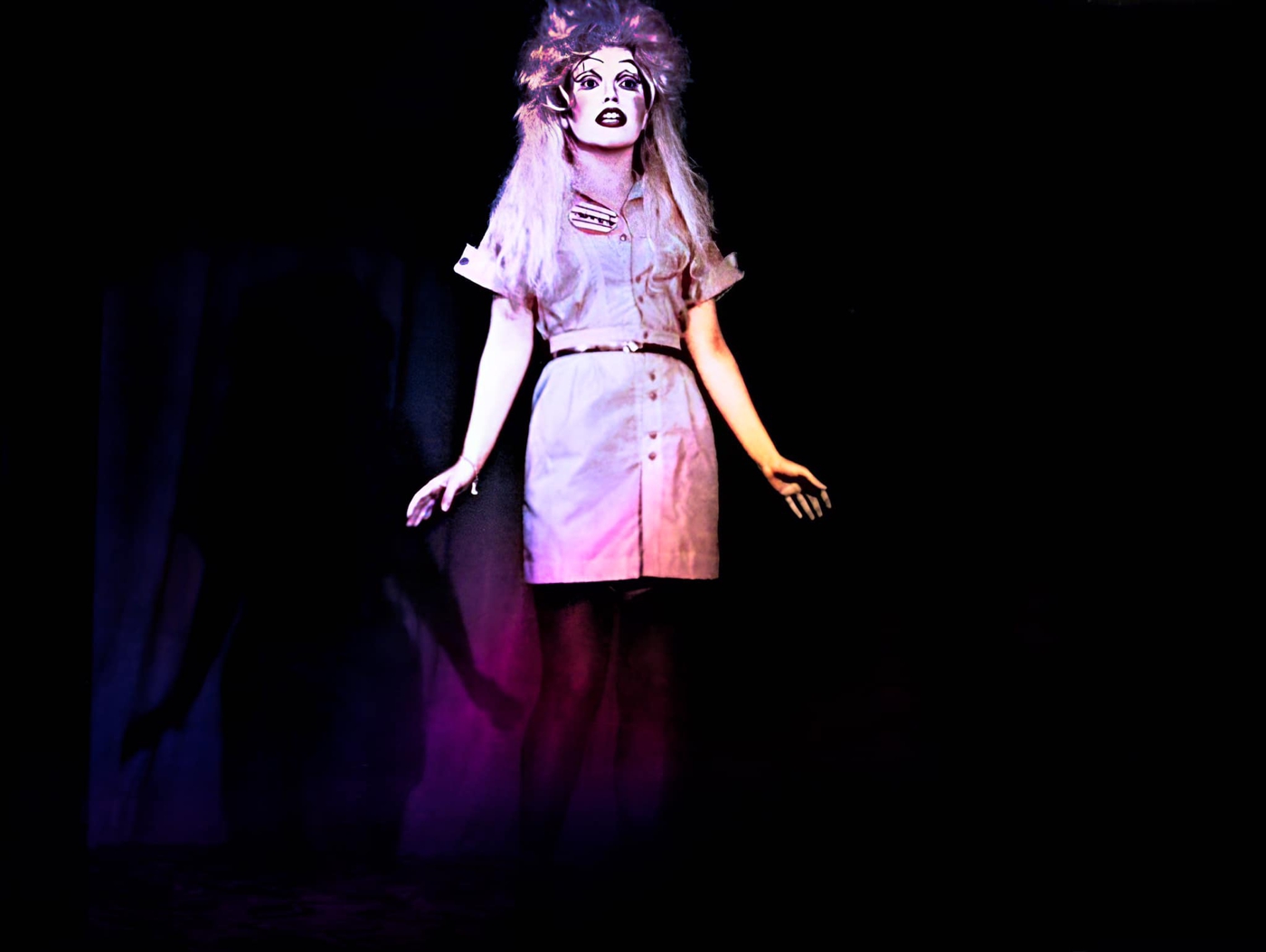
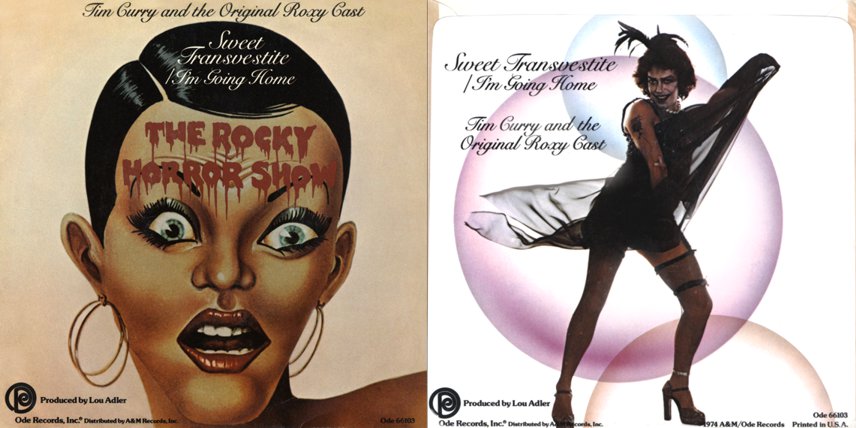
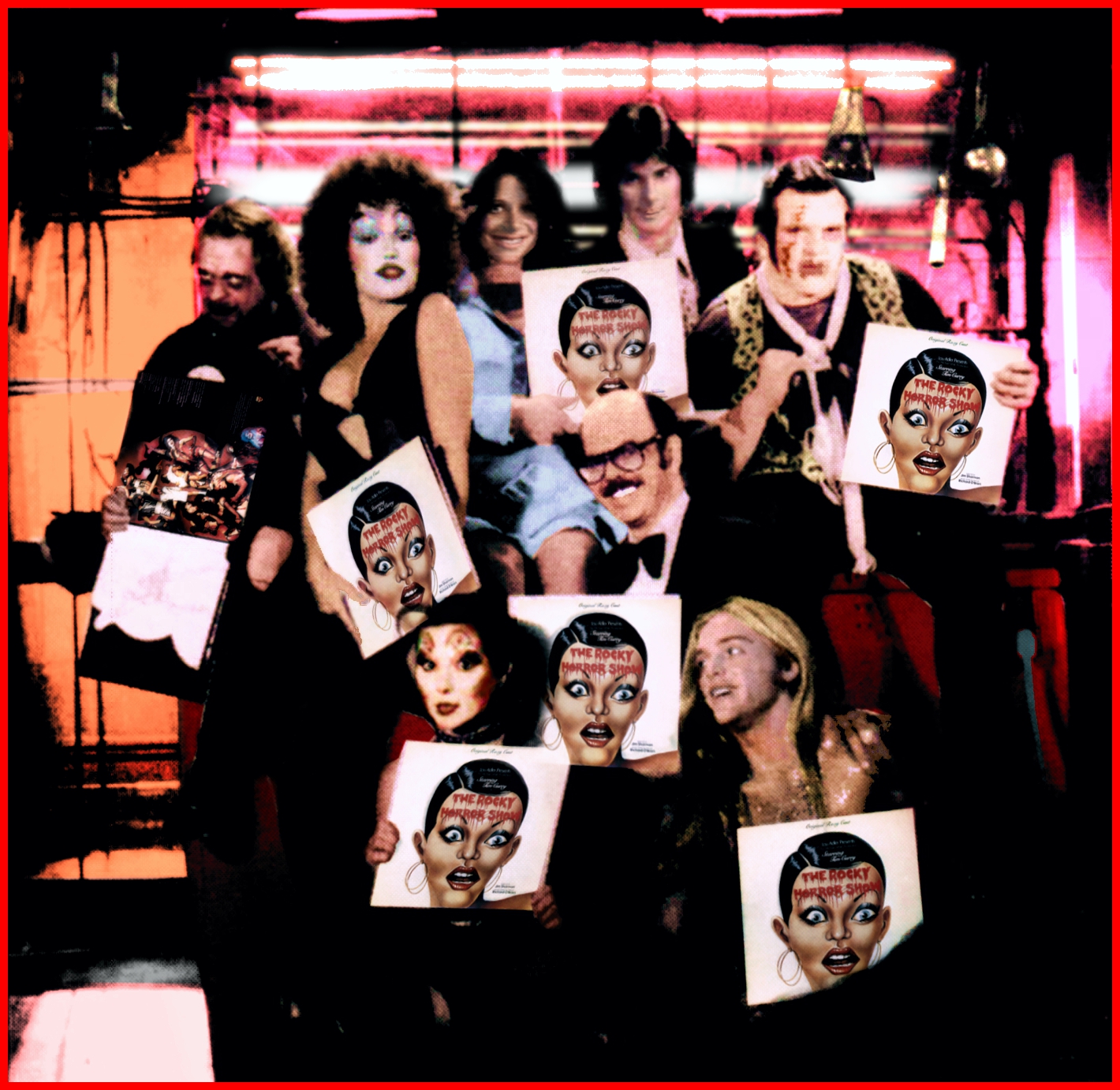
Thanks to Lou Adler's company ODE Records, his access to the best musicians, and a cast of amazing singers,
the Roxy Cast recording is the most listenable of all the Rocky Horror casts!
American sites will boast that this is the most common recording that people own, but this is only the case in the USA, where the Film Soundtrack wasn't released till 1979. In Australia, the Original Australian Cast was the copy everyone owned, until the release of the Soundtrack in 1975. The Roxy Cast recording was only sold in Australia, as an import, and was one of the rarest for a long time.
An American newspaper review of the Roxy Cast Recording. The show ran for 9 months, and certainly wasn't followed by London, nor did it "hit the road".
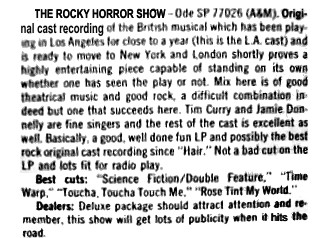
Tim Curry, pointing to the signage in the West alley next to "The Roxy"